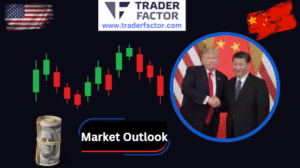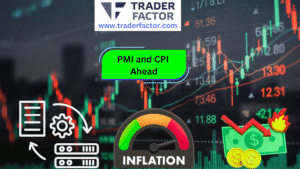Fed Chair Powell is anticipated to discuss last week’s rate cut in his upcoming remarks. Additionally, the PCE Price Index is scheduled for release on Friday. As a key measure of inflation, the PCE Price Index offers a comprehensive view of changes in consumer prices, which are crucial for assessing the economic health of the nation. This index is particularly significant to the Federal Reserve’s policy-making process, as it helps guide decisions on interest rates and other monetary strategies. With these pivotal events on the horizon, market participants are keenly poised to analyze the potential implications for financial markets and the broader economy.
Stock Market
The Dow Jones Industrial Average experienced a slight decline of 0.3%, whereas the S&P 500 showed marginal gains, and the Nasdaq Composite rose by 0.3%. These movements came as the major indexes closed positively on Tuesday, fueled by a significant rise in AI chipmaker Nvidia (NVDA) and a broader stock rally, spurred by a substantial stimulus package from Chinese authorities.
U.S. Economic Outlook and Investor Sentiment
Amid burgeoning optimism around a potential soft landing for the economy, U.S. stock markets have rebounded from an early September downturn. The Federal Reserve’s ongoing interest rate reductions have further bolstered confidence. Consequently, both the S&P 500 and the Dow recorded new highs on Tuesday, while the Nasdaq remains just 3% shy of its peak.
Tech Sector Developments
Nvidia shares climbed an additional 3% on Wednesday morning, continuing their upward trajectory from the previous day. The broader tech sector displayed mixed results: Microsoft (MSFT), Alphabet (GOOGL), and Meta Platforms (META) made gains, while Apple (AAPL) and Amazon (AMZN) saw slight declines. Micron (MU), anticipating its earnings report post-market close, rose nearly 2%.
Economic Indicators and Market Watch
Wednesday presents a light economic data schedule, preceding significant reports on labor and inflation expected later in the week. Market participants are keenly observing these releases for insights into economic health and potential Federal Reserve rate decisions. Gold futures edged higher, approaching record levels around $2,690 per ounce, whereas crude oil futures dipped by 1%, retracting previous gains. Bitcoin also decreased by 1%, settling near $63,800 after reaching a monthly high overnight.
Currency and Commodity Shifts
Fluctuations in the U.S. Dollar led to a partial retreat in EUR/USD from its yearly peaks near 1.1215. The GBP/USD pair also fell back to the 1.3400 range, reacting to renewed Dollar strength. Gold continues its upward trajectory near record highs, buoyed by the prospect of further Federal Reserve rate cuts and geopolitical tensions, notably in the Middle East. As a safe-haven asset, gold benefits from reduced interest rate environments, becoming more appealing to investors.
Exchange Rate Movements
The USD/JPY pair increased by over 0.90%, reaching 144.54, supported by a rise in the U.S. 10-year Treasury yield. Meanwhile, AUD/USD pulled back from its year-to-date peak amidst a modest uplift in the USD, influenced by global economic uncertainties and geopolitical risks, with the divergent policies of the Federal Reserve and the Reserve Bank of Australia tempering significant declines.
Understanding the PCE Price Index
The Personal Consumption Expenditures (PCE) Price Index is a crucial economic indicator that measures the average change in prices paid by consumers for goods and services over time. It reflects changes in consumer behavior and includes adjustments for the substitution of goods, providing a comprehensive view of inflation across the economy.
Role in Measuring Inflation
The PCE Price Index plays a vital role in gauging inflation by capturing a wide array of consumer expenditures, which helps in understanding how inflation affects households. Unlike the Consumer Price Index (CPI), which focuses on out-of-pocket expenses for consumers, the PCE Price Index also accounts for expenditures made on behalf of consumers, such as healthcare services paid for by employers or the government.
Differences from the CPI
While both the PCE Price Index and the CPI are used to measure inflation, they differ in several key aspects:
- Scope and Coverage: The PCE Price Index encompasses a broader range of expenditures, including healthcare and other services paid by third parties, whereas the CPI is limited to direct consumer purchases.
- Weighting and Calculation: The PCE adjusts for changes in consumer behavior and product substitutions, offering a more dynamic and responsive measure of inflation compared to the fixed basket approach of the CPI.
Significance to Policymakers
The PCE Price Index is particularly significant to policymakers, especially the Federal Reserve, as it serves as their preferred measure of inflation. The index’s comprehensive nature and its ability to provide a nuanced picture of consumer spending make it a valuable tool for setting monetary policy. By closely monitoring the PCE Price Index, the Federal Reserve can make informed decisions on interest rates to maintain price stability and support economic growth. The index’s insights into inflation trends help shape policy decisions, aiming to achieve a balanced and sustainable economic environment.
Disclaimer:
All information has been prepared by TraderFactor or partners. The information does not contain a record of TraderFactor or partner’s prices or an offer of or solicitation for a transaction in any financial instrument. No representation or warranty is given as to the accuracy or completeness of this information. Any material provided does not have regard to the specific investment objective and financial situation of any person who may read it. Past performance is not a reliable indicator of future performance.

















